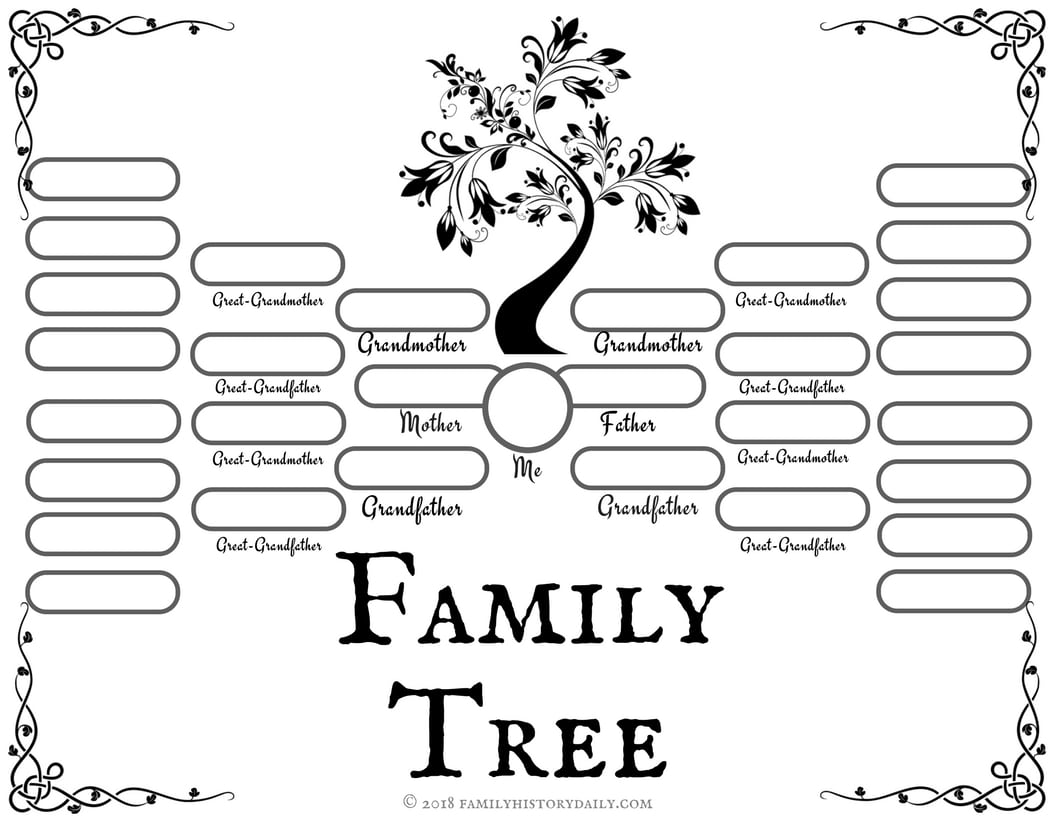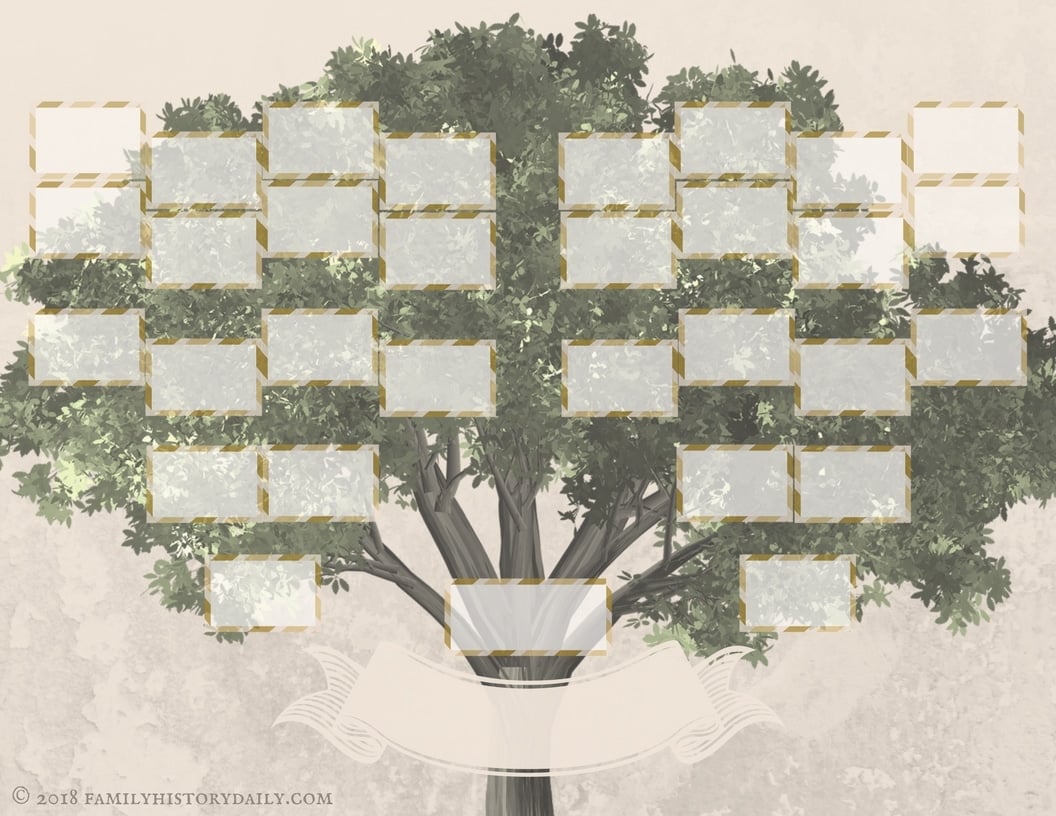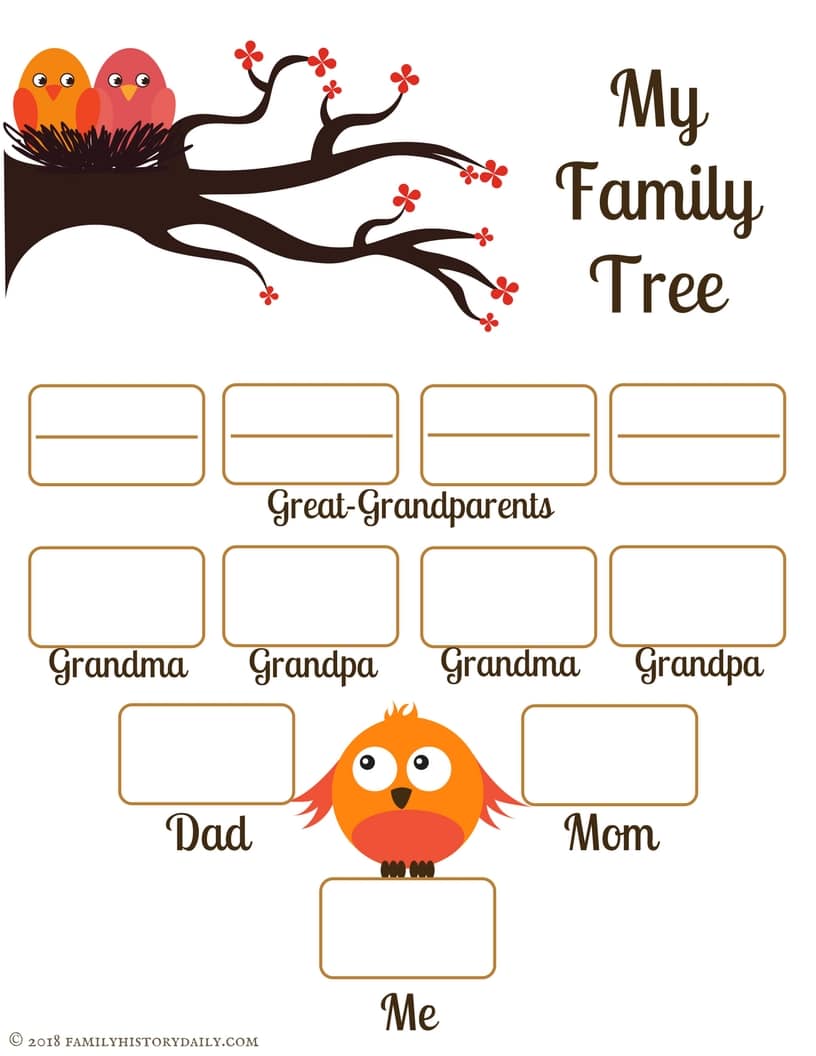Are you looking for a beautiful family tree template for a craft or school project, to display in your home or share with family? A blank, printable family tree can be used for all of these purposes and more. The trick is finding one that’s styled just right for your needs – which is why we have created four unique (and free) family tree options that you can easily print out.
You’ll find images of all of the tree templates below. To use one in your project simply click on the tree itself (or the link under the image) to open a large PDF version which you can download or print. The trees are designed to be printed on standard 8.5 x 11 office paper at the correct resolution so please do not print the image on this page or your tree may come out blurry. Use the provided PDF.
All of our tree templates include spaces for four to five generations – children or parents at the bottom, then grandparents, great-grandparents, and great-great-grandparents at the very top or sides. If you are using one of these for a child’s school project you could easily write the child’s name at the top or bottom of the page if no space is included.
Try These 4 Free Family Tree Templates
First up is a family tree chart with a basic design in black and white for easy printing. This printable would be a great starting point for kids or teens who want learn more about their family tree or as a fun project to work on with a parent or grandparent. Even better, the simplicity of this family tree makes it useful in so many different ways, from scrapbooking to simply organizing your genealogy research.
Click here for a print-ready PDF of this family tree. Printing the above image will likely result in a blurry tree on standard size paper so please use the high-quality provided PDF.
Next up is a printable family tree featuring a little more color and texture, plus plenty of room to fill in the names of your ancestors with space left over for some additional details like date of birth.
This family tree would make a great addition to any scrapbook or as a point of reference to take along to a family reunion or other get-together – you could even frame it and hang in on the wall. Use the blank banner at the base of the tree to include any labels or extra information you might wish to feature on your family tree.
Click here for a print-ready PDF version of this family tree.
This next printable genealogy template is geared toward the kids or grandkids in your life. With bright colors and plenty of space in each box, little hands will have no trouble filling in each box with those special people that belong to their family tree.
This printable would make a great activity for kids of any age, or really anyone who enjoys a little whimsy in their lives. Use it for a fun weekend activity with the grandkids, as a homeschool worksheet, for an assigned school project, or even as a handout for a group.
Access the PDF version of this family tree template here.
Last of all, the most decorative of the free family tree templates. This printable would be a good choice if you’re looking for a blank family tree to complete, frame, and display in your home. It would also be great included in a scrapbook or filled out, framed, and given as a special gift to a child, sibling or parent.
The blank oval spaces can easily accommodate the names of your ancestors and other important details. Feeling really creative? You could even use the oval spaces as little picture frames that feature photos of your family members.
Download the PDF version of the oval family tree here.
So, there you have it! Happy printing!
You might also like:
Why You Should Start Using Pinterest for Genealogy Right Now (and How to Do It)
Master Genealogy Organization in an Hour with One Online Program
Thank you to Kate Jackson, Family History Daily Associate Editor and Pinterest Manager, for creating these beautiful templates.





Need some family tree templates to start my family tree
Would like to have a free family tree templates to start my family tree
I sent two of these trees to my local Staples to print for me, but since they have your copyright on them, they wouldn’t print them for me unless I had some kind of permission. Can you give me permission to use for my personal use? Thank you so much! I love them and have an idea to use them as a gift to family members.
THANK-YOU for sharing these gorgeous trees. They will be happily viewed by some grandchildren who are interested in where they fit into the family tree.
Several years ago I downloaded my tree to a memory stick and took it to staples printers. I had them print out on mechanical engineering paper such as used for blueprints (it is on a roll). Not 18000 names but it did go back to colonial America. I did a sheet for my paternal and one for maternal sides.
Wow Thats a lot of names!
I have a tree with about 18,000 names, and some lines go back to about 1000 AD. I would like to put this information on A chart to give a full impact of lineage at a glance. Is it possible? Any suggestions? I have contacted a local publishing firm/printing house that could not do it, but they also did not understand the genealogy concept.
Need a family tree Template with 5 sibling (branches) that can have leaves for each family members name attached to the appropriate branch! Saw it seven months ago but not able to find now! Help! Thanking you in advance for your time and attention!
Are there any that would accommodate 17 generations?
Need a family tree Template with 5 sibling (branches) that can have leaves for each family members name attached to the appropriate branch! Saw it seven months ago but not able to find now! Help! Thanking you in advance for your time and attention!
Please send info to:
Burton Milrod [email protected]
Need a family tree Template with 5 sibling (branches) that can have leaves for each family members name attached to the appropriate branch! Saw it seven months ago but not able to find now! Help! Thanking you in advance for your time and attention!
Hi!
I’m preparing Our family tree… But it includes siblings… Do you have or do you know an App or program to do it??